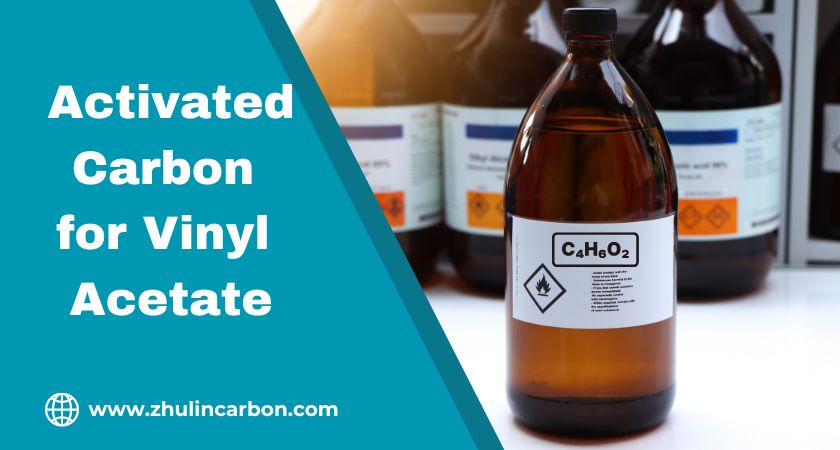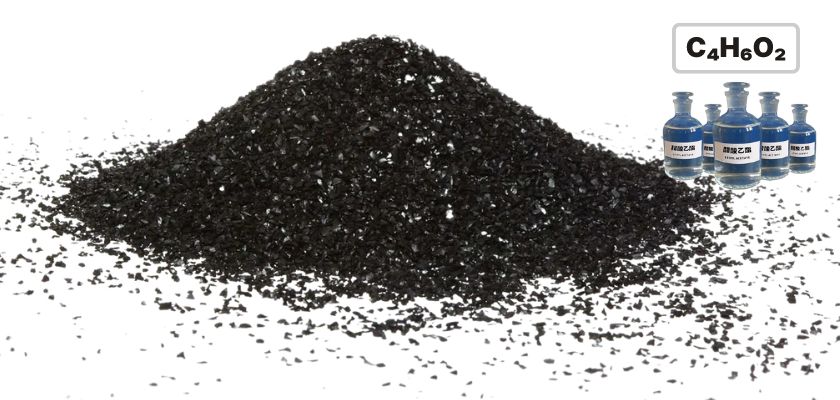
Vinyl acetate introduction
Vinyl acetate, also known as vinyl acetate monomer (VAM), is a colorless, flammable liquid with a sweet odor and the chemical formula CH3COOCH=CH2. It's a crucial industrial chemical primarily used in the production of polymers, especially polyvinyl acetate (PVA) and ethylene-vinyl acetate (EVA) copolymers.Its high reactivity makes it excellent for polymerization processes. While it's a valuable industrial compound, vinyl acetate requires careful handling due to its flammability and potential health hazards if inhaled or absorbed through the skin. The global demand for vinyl acetate continues to grow steadily, driven by its versatility and importance in various manufacturing sectors.

What is the raw material of vinyl acetate?
Vinyl acetate is primarily produced from the reaction of ethylene and acetic acid with oxygen in the presence of a catalyst. The main raw materials are ethylene, acetic acid, and oxygen. Ethylene, a hydrocarbon derived from petroleum or natural gas, serves as the primary building block. Acetic acid, commonly known as vinegar in its diluted form, is the other key component. Oxygen is used in the oxidation process. The reaction typically occurs over a palladium-based catalyst, which may include other metals like gold as promoters. Additional materials such as water and various solvents may be used in the purification process or to stabilize the final product, but ethylene and acetic acid remain the core raw materials for vinyl acetate production.How do you manufacture polyvinyl acetate?
Polyvinyl acetate (PVA) is typically manufactured through a process of free radical polymerization of vinyl acetate monomer (VAM). The most common method is emulsion polymerization, where VAM is dispersed in water with emulsifiers. A free radical initiator, such as a peroxide or azo compound, is added to start the reaction. The mixture is then heated and sometimes pressurized to initiate and control the polymerization process. Temperature, pressure, and other conditions are carefully managed to control the molecular weight and properties of the resulting polymer. Once the desired degree of polymerization is achieved, the reaction is stopped. The final product is usually produced as an emulsion, which can be further processed by adjusting pH or adding stabilizers, depending on its intended application. This versatile process creates PVA for use in various products including adhesives, paints, and coatings.Vinyl acetate production process problem
During vinyl acetate production process, in addition to the target product, impurities such as acetic acid, acetaldehyde, and unreacted acetylene may also be produced. The presence of these impurities not only affects product quality, but may also have an impact on subsequent processing and the environment.How does activated carbon work for vinyl acetate?

Activated carbon has a highly developed pore structure and a huge specific surface area, which can effectively adsorb impurities and harmful substances in the production process of vinyl acetate.
Removal of impurities
The powerful adsorption capacity of activated carbon can effectively remove impurities in vinyl acetate, such as acetic acid, acetaldehyde and other by-products, and improve the purity of the productDecolorization and deodorization
The adsorption of activated carbon can also remove pigments and odors in vinyl acetate, improving the appearance and smell of the product.Catalyst protection
In the gas phase synthesis process of vinyl acetate, activated carbon can adsorb impurities that are harmful to precious metal catalysts, extend the life of the catalyst, and improve production efficiency.Waste gas treatment
The VOC-containing waste gas generated during the production process can be treated by activated carbon adsorption to reduce environmental impact and ensure that it meets the emission standards.Solvent recovery
In the separation and purification process of vinyl acetate, activated carbon can be used to recover unreacted raw materials and solvents, improve resource utilization and reduce production costs.Water treatment
Activated carbon also plays an important role in treating wastewater generated during the production of vinyl acetate, removing organic pollutants and ensuring that water quality meets standards.Conclusion
The application of activated carbon in vinyl acetate production not only improves product quality, but also brings significant economic and environmental benefits to enterprises. With the continuous advancement of technology, activated carbon will play a more important role in the vinyl acetate industry, driving the industry to a more efficient and environmentally friendly direction.Choosing the right activated carbon supplier is crucial to optimizing the vinyl acetate production process. As an industry-leading activated carbon manufacturer, ZHULIN Carbon has been committed to providing high-performance, customized activated carbon solutions for vinyl acetate production. Contact us now to improve your vinyl acetate production efficiency!

